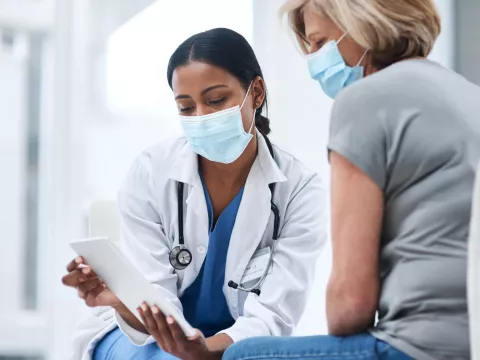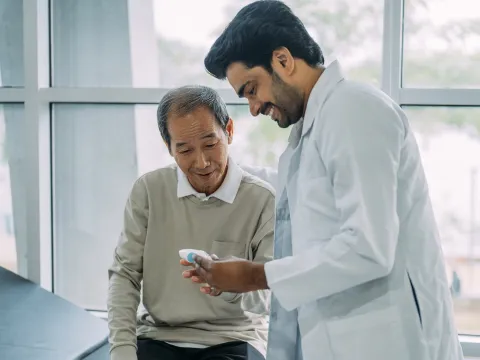- AdventHealth

Choose the health content that’s right for you, and get it delivered right in your inbox.
Have you started to notice veins in your legs becoming darker and more noticeable? As you age, you might find this increasingly common.
“Varicose veins cause heavy, achy, tired legs. When left untreated, the vein can enlarge and cause more serious complication s,” explains AdventHealth Vascular Surgeon, Alan Wladis, MD.
Here’s what causes varicose veins to develop and what you can do about them.
Causes of Varicose Veins
Varicose veins are usually seen in the legs and feet of women ages 50 and older, but they can be anywhere on the body, and anyone can get them. They bulge with blueish strands running through the skin’s surface. Sometimes they’re surrounded by spider veins, which are smaller, thinner-looking veins resembling a spider web. Spider veins are more of a cosmetic issue, but can sometimes cause discomfort.
Veins return blood to the heart and they have valves that open and close to help keep the blood flowing in the proper direction. “The calf helps pump the vein blood to the heart which is why exercise is so important.” explains Dr. Wladis.
The likelihood of varicose veins developing increases as we get older due to the amount of time on our feet. Genetics or family history also plays a role in developing varicose veins.
When to Be Concerned
Many people with varicose veins report aching, heavy, even sore legs or muscles, along with swelling, especially after standing. Some people also get dry skin and itching when they have vein disease.
You should discuss your symptoms with your doctor when:
- The symptoms of heaviness, achiness and fatigue become bothersome to daily activities
- A varicose vein bleeds (hold direct pressure to the site and elevate the leg to stop bleeding)
- The varicose veins become warm or tender or red as this can be a sign of a superficial blood clot
Most often, spider veins and varicose veins can be done without any procedures.
Treatment Options for Varicose Veins
Your doctor will look at your overall health history and the condition of your varicose veins before recommending a treatment option. First, they may suggest trying compression stockings and/or an over-the-counter drug such as aspirin or ibuprofen to help with discomfort.
In most cases, varicose veins don’t need to be removed, but it’s an option if they become too painful. You and your vascular specialist may discuss the possibility of one of these methods to eliminate the veins:
- Ablation
- Laser treatment
- Sclerotherapy
- Surgical removal
Treatment depends on the area of the body, the severity of the condition and your unique health history.
More Information on Our Cardiovascular Care
Since anyone can be at risk for developing varicose veins, and at any age, it’s best to know your options, even if you haven’t noticed them on your body yet. When you need the advice and care of vascular specialists, we’re here to help. Learn more about the AdventHealth Heart, Lung and Vascular Institute .



